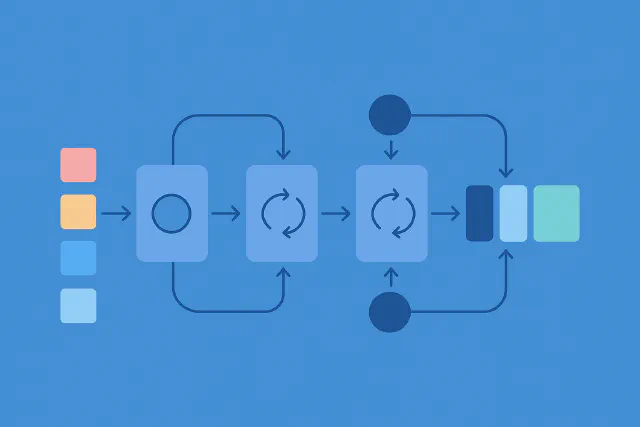AI agents have the ability to complete tasks autonomously, but without clear, well-structured prompts, they stumble. Prompt engineering helps bridge the gap between potential and performance.
This is Part 2 in our AI Agents series. If you missed Part 1 “AI Agents Defined”, check it out here.
What Is a “Prompt”?
At its core, a prompt is how you instruct an AI agent. Prompt engineering is the art of crafting messages, both system-level and user-facing, to get useful, consistent results from large language models (LLMs).
Two Prompt Types: System vs. User
- System prompts set the stage once: defining the agent’s tone, persona, ethical guardrails, expertise, and output response format. Example: “You’re an executive-level assistant. Respond concisely and coherently. Do not produce financial projections without a disclaimer.”
- User prompts are transactional, specific to each request: the question you ask, the context you provide, or the data you feed in. Example: “Draft a summary of Q2 earnings for our Board, including these bullet points: revenue up 8%, operating margin 15%, headwinds in Europe.”
The rule of thumb? If it’s something you want the agent to always remember (e.g., “you’re a finance expert”), it typically belongs in the system prompt. If it’s request-specific (e.g., “analyze this quarter’s sales data”), that goes into the user prompt.
The system prompt tends to not be visible to the end user as hiding it can prevent confusion or tampering, though showing the prompt could improve transparency and trust.
Conflicts are possible as user prompts may override system prompts in cases like persona shifts, boundary changes, or domain switches. This may cause inconsistent behavior or confusion, since models blend instructions rather than following one set over another. To address this, researchers have proposed an instruction hierarchy that teaches LLMs how to to prioritize privileged instructions.
Why Prompt Engineering Matters
This gets us to the importance of prompt design and development. Allocating time, effort, and budget to prompt engineering is justified for the following reasons:
- Consistent performance: Well-designed prompts lead to repeatable, reliable responses, critical for enterprise workflows where accuracy and tone must hold steady.
- Use-case templates: For repetitive tasks (summaries, emails, analysis), designing prompt templates with variable slots helps scale high-quality output with minimal manual adjustment.
- Few-shot learning: Instead of fine-tuning, you can embed sample Question & Answer (Q&A) pairs directly in the prompt (called “few-shot learning”). This teaches the model the pattern you want without training a new model.
- Modular workflows: Break complex problems into steps, each step guided by its own prompt. This not only improves accuracy, but also helps with monitoring, auditing, and troubleshooting.
- Safety via guardrails: Embedding clear boundaries in system prompts (or using guardrail frameworks like Llama Guard) helps avoid hallucinations or risky outputs.
Business-Worthy Reasons to Log Prompts
If you run a business, you probably have a CRM - a Customer Relationship Management system (e.g. Hubspot). Why? If you don’t log customer interactions, you lose history, context, and accountability. Your sales and business development efforts will fail. It’s the same with prompts, which encode core business processes. Key reasons to log prompts include:
- Intellectual property: Your prompt library is proprietary strategy.
- Reproducibility: You can’t audit or defend blind. Versioning prompts is as essential as versioning code.
- Governance: Executives need visibility. Prompt logs support compliance, ethics, transparency.
- Maintainability: Treat prompts like software. Version-control to iterate, fix, or update maintain best practices.
What This Means for Executives
Prompts are no longer just technical instructions; they’re emerging as a form of business logic. In organizations embedding AI agents into core workflows, prompt design becomes part of the intellectual fabric.
Think of prompts as the operating instructions for how your AI agents think, behave, and act on your behalf. If your company is building co-intelligent systems where humans and AI work together, then prompts are the connective tissue. They encode values, tone, priorities, and strategy into every AI interaction.
This makes prompt engineering a strategic capability, not just a tooling choice.
- Prompts define how knowledge is applied: what the agent knows, how it behaves, and what boundaries it respects.
- Prompt templates scale decision-making: letting agents perform tasks in consistent, business-aligned ways.
- Prompt logs document operational logic: creating a paper trail that’s critical for compliance, transparency, and trust.
As AI agents become more embedded, the prompts behind them will hold as much weight as process maps or policy manuals. Executives don’t need to write them, but should ensure they are treated as real assets: reviewed, versioned, governed, and aligned with how the organization delivers value.
What’s Next?
In Part 3, we’ll dive into the LLM “brain” behind these agents: how model selection, capabilities, and tuning strategies influence performance so you can make smart choices about which model powers which process.
Image generated using GPT-4o










